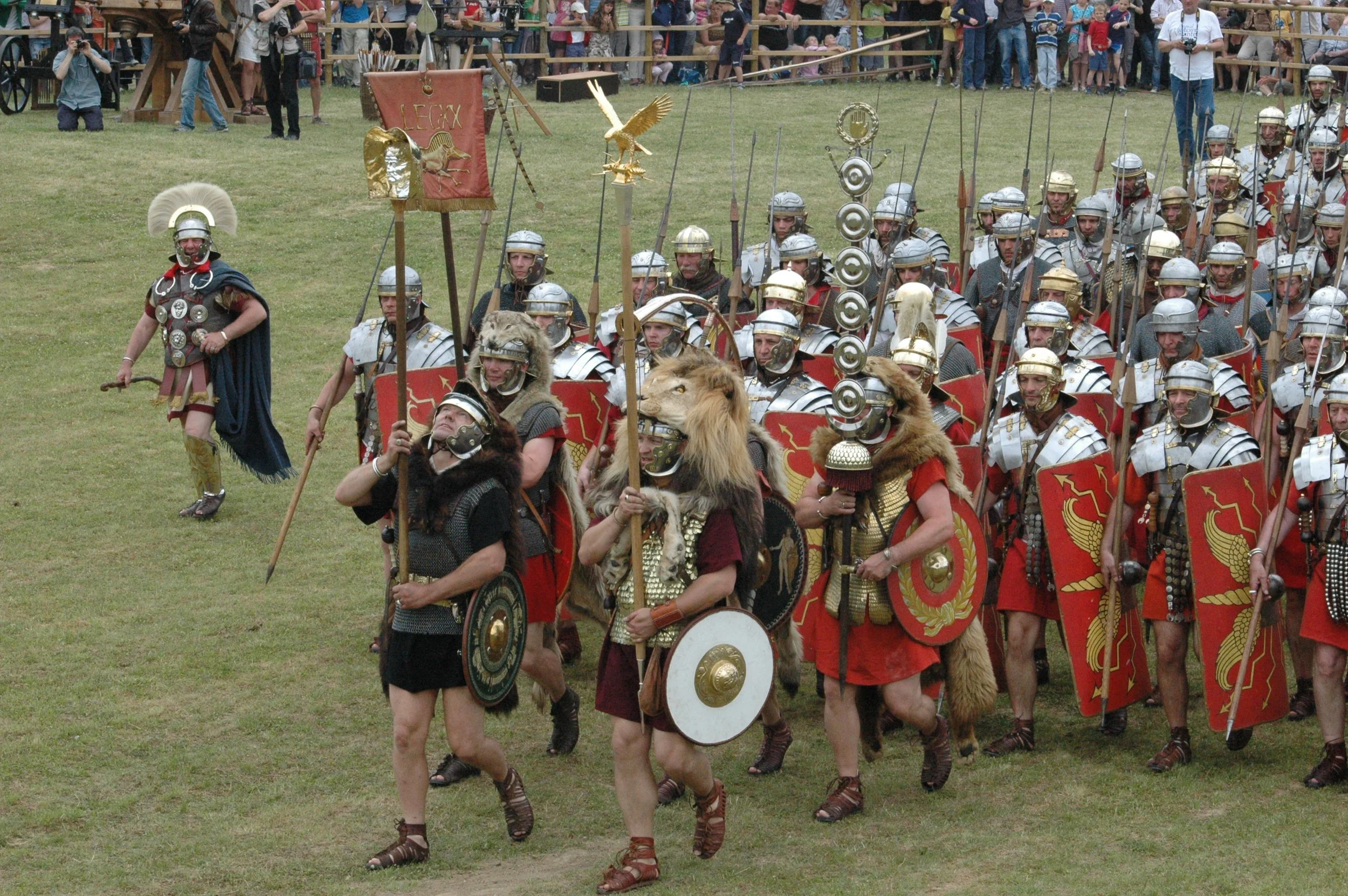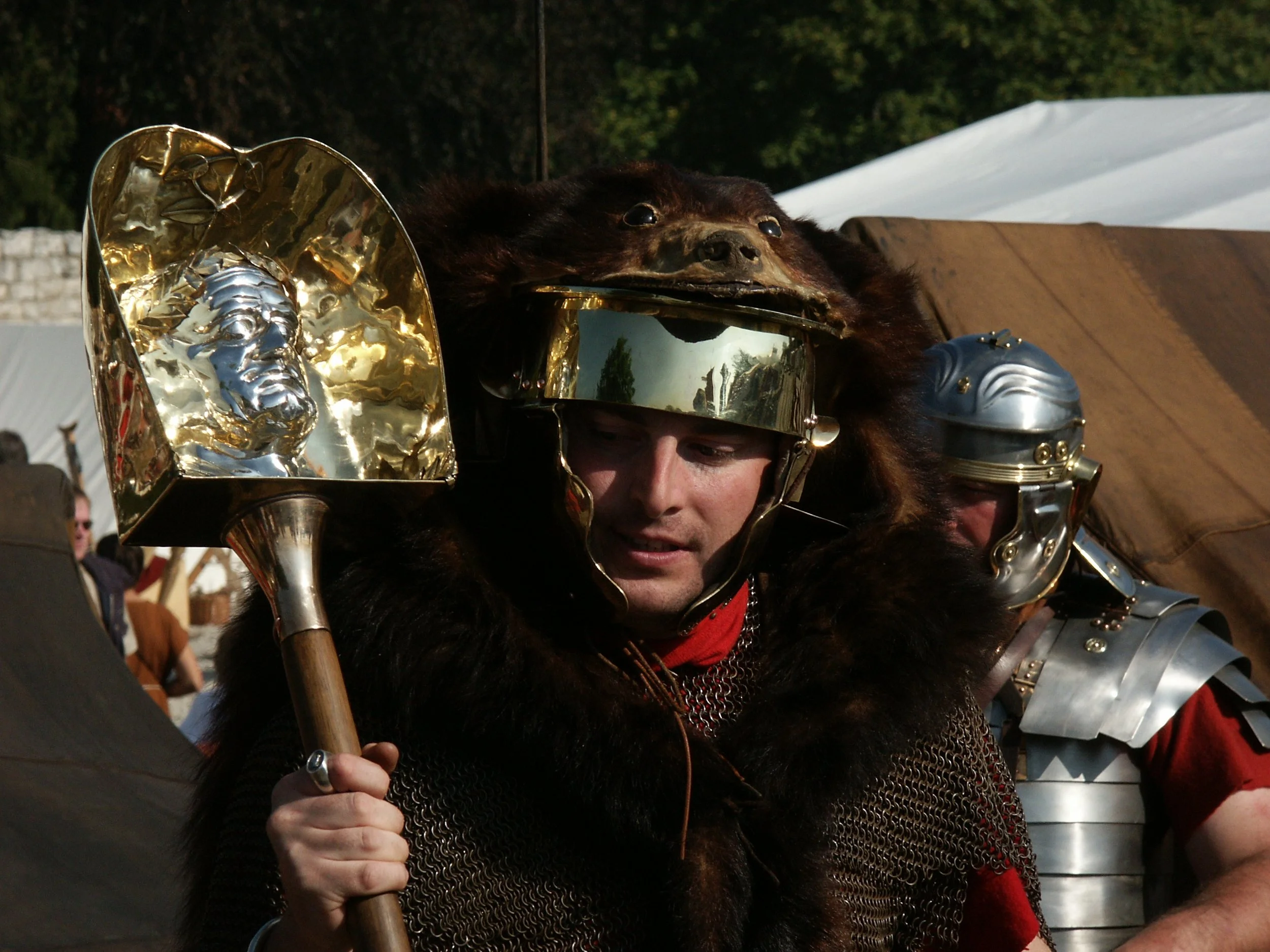THE ROMAN ARMY: RANKS
The Emperor Augustus established a career structure in both the civil and military service, up which men from the upper and middle classes could climb.
The emperor was commander in chief of the army. Governors exercised the emperor's authority on his behalf in the provinces and they could have three or four legions under their command. In overall command of a legion would be a legate, a senator in his early thirties. He would normally hold this post for only two or three years before moving to a higher position. Eventually he might become a governor himself.
Below the legate would be a senior tribune, normally a young man of about nineteen or twenty. He would be learning military administration and would not be expected to command the legion in the absence of the legate. That duty would fall to the camp prefect, an experienced soldier who was usually an ex-centurion nearing the end of his service.
Next in the line of command were 5 junior tribunes, whose duties were mainly administrative. Some had previously been in command of auxiliary units.
The most well known officers were the centurions, career soldiers promoted from the ranks and experienced both in military and administrative duties. Within his century the centurion had the option of choosing his deputy, hence that officer was known as an optio. The rank structure of the legion was a pyramid. The process rewarded merit, but bribery and corruption were also rife. The most senior centurion in the legion was called the primus pilus (literally first spear).
Each century had its own standard, the signum, and every legion had an eagle standard, the aquila. It was the ultimate disgrace to lose this sacred object in battle.
Whenever a unit was detached from the legion to do service elsewhere it took with it a flag type standard, the vexillum, with the name and number of the legion on it.
There were also musicians, who played a variety of horns. There seems to be no evidence for the Roman army using drums.
There were similar rank structures in auxiliary infantry and cavalry units, which had their own officers, standards, and musicians. There is evidence for officers, and other soldiers, switching between infantry and cavalry units to gain higher rank.
Another form of reward lay in the variety of military decorations which were awarded for bravery. The army gave awards for bravery and service. Sets of phalerae given for bravery, proudly worn in life and displayed after death on tombstones. Crowns were given for particular valour, saving the life of a citizen, naval battles, and sieges.







